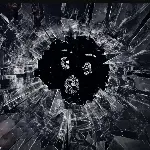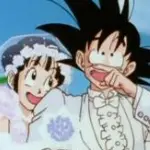"The journey of a thousand miles begins with one step, but the journey of understanding begins with one frame."


Here's the truth that changes everything once you recognise it:
We are all living in the third act of our coming-of-age film !
This is my first article, written as I embark on the most important journey of my creative life. My "filler episodes" are done; this one, I intend for it to be canon.
After years of loving cinema like from both sides of the screen , after countless hours of analysing every frame , I am finally ready to honour the kid in me who first discovered that movies aren’t just entertainment , they were blueprints for living !
The perks of being a mad, mad cinephile is that you tend to bend reality of cinema even further when you starts seeing a single narrative in two different films
I bet we have all done this
And I've realised something profound: the entire architecture of coming-of-age cinema can be found in just two perfect films
Whisper of the heart & Only yesterday
They don’t just represent the pinnacle of coming of age storytelling ,I believe; they are literally the twin mirrors of our journey through life.
The Architecture of Becoming
These two films have an underlining understanding that most coming of age films lack ; growing up isn’t about abandoning who you used to be or embracing societal narratives but it's about integrating all your previous selves into someone your younger self would be proud to become. They operate on what I call "recognition frequency” ,that specific emotional wavelength where we don't just watch characters but see ourselves across time and space transcend onto our screen , its us , we are them and they showcase a memory , a moment of our life in a magnum opus format .
I believe that they are the literal structure of human emotional development, the visual vocabulary of growing up, each one corresponding to a crucial phase in our journey toward selfhood. Each of these films have had contributed or resonated with me on many grounds , they are like memories that dont just inform our present but playback like perfectly edited sequences shot on anamorphic lens , complete with recurring motifs , emotional color grading and the kind of symbolic visual language that one the few films have underlined ,We are simultaneously the protagonist, cinematographer, and audience of our own existence.
I’ll show you how Whisper of the Heart and Only Yesterday create a complete emotional education that most coming-of-age stories struggle to achieve individually. They understand that growing up isn't a linear progression but a spiral dance between forward momentum and backward integration.
ACT ONE: THE ARCHITECTURE OF LONGING
Chapter 1: The Cartographer of Dreams
Whisper of the Heart

Where Wonder Takes Root:
Whisper of the Heart captures the intoxication of first purpose, the moment when dreams stop being fantasies and start becoming blueprints, its about the subtle and nuanced approached we take in the early stage of understanding what it feels like to have love , aspirations , connections with oneself and a sudden feeling of adoration for someone we never believed could turn into the very meaning of Love in its nascent and fragile stage , this film carries a very special space in my life as I watched during a certain period of my life where the movie didn’t just do the usual deed of “carrying me inside and letting me part of the world it has designed ”;but instead it felt like a memory going back into my teenage years , my school days ,that very moment I felt I have found the ‘one’ , the film establishes itself as something metaphorical to every other person who has been to a stage in their life where life was at a pause from making big decisions that alter our livelihood and rather giving you time to find yourself and your interests . This film from its ambience to the very music of the opening credits ‘country road’, isn't that enough to recognise how the film knows the intent it carries for adults as well as teenagers

There are scenes that are highly romantic , it will make you chuckle at times for its brilliance in portraying the way they fall for each other , visuals of love in its budding phase ,makes you reminisce your own moments !
And not just romance with ambition ;this film ends up carrying way more, for instance ;
Shizuku tracing the name "Amasawa Seiji" across library cards, that very scene defines fate and destiny , its beautiful , but on the metaphorical level while watching this movie with the gaze of a cinephile I began to notice my own patterns: every film I obsessed over, every director interview I memorised, every frame I analysed was signed by the same invisible hand pointing toward something I couldn't yet name but knew I was meant to pursue.
The Baron's Incomplete Story: The Baron figurine becomes cinema's perfect metaphor for the adolescent condition thats beautiful, valuable, but somehow incomplete without its missing companion. When Shizuku first sees it, Kondo employs a slow pushin that mirrors how we approach our own deepest recognitions.

The Sunrise Confession: "I want to be able to write something that wonderful someday."
Seiji's hilltop proposal occurs during golden hour, but Kondo the director doesn't use this for romantic prettiness ;he uses it for emotional truth
And of all , I believe that my way of tracing back to this film was the final bike ride sequence , its a dream , a fairytale sequence at its finest .To me ,its portrayed in a realistic approach as it carries the innocence of teenage love , its so beautiful , there was this one reel of this very sequence that made me come back to this film and I am grateful to have revisited and lived my time in this space master Konda built for us.

Its a very fragile tale resonating with moments that life gave us in our adolescence , a time ,where we believed we have sorted things out ,this is our way ahead in life !! this is it ! .
watching this kind of love , so pure and tender in the wake of aspirations without any weight to carry for big decision in this cosmopolitan life has to be one of the magical things about CINEMA!
What I really miss is this essence of simply blissfulness films used to have , not just the simple peaceful portrayal of life but the narrative has depth into it ,some sequences as calms as they seem would carry profoundly strong emotions ;both visually and its in core storyline.
This film carries many such scenes , be it the metaphorical tale and the conspiracy behind the cat , her own writing or be it the way we feel emotional bound to someone in real life like the characters did for each other , this, i believe is somewhere lost with time in todays films (including Ghibli) ;the beauty in realism…
lately the only way to resonates with modern take on such naunced cinema is via kdramas , cdramas (when i fly towards you)but still the natural essence of life is not easy to be found.

Kondo’s direction weaves two aspects ;Emphasis on the Mundane and Magical, suggesting that magic can be found in the pursuit of one's dreams and in the beauty of the ordinaryIts heartbreaking that the essence of realism that Yoshifumi Kondo carried into Ghibli cinema is now lost despite how beautiful Ghibli films still are,
his masterful work and technical prowess was undeniable and evident across all his work where the story carried realism and the mind and memories were depicted with fantasy .Miyazaki saw Kondo as a potential successor, someone who could carry the torch of Ghibli's distinctive style and quality into the future. His passing left a significant void in the studio's directorial talent pool, prompting Miyazaki to come out of retirement multiple times

this film carries the phase of the opening credits(ACT 1) , to the point of intermission of our own coming of age flick , it binds the hopefulness with the beautiful of finding companionship and love as we grow , its about the period we make mistakes and live in our true form
dreaming , desiring , adoring and loving everything that brings you happiness
This film is about the early days of sense of place ,magic that life carries and we believed to carry truth ,compassion ,aspiration , romance & the rising sun metaphor
For us its about the fragile innocence we carry to our adulthood , I believe somewhere , someday we want to be like these two protagonists who have found meaning to life , found love compassionately and believe that the world is a beautiful place
ACT 2 :SECOND MIRROR: THE ARCHAEOLOGY OF SELF
CHAPTER : The Excavation Chamber
Only Yesterday

Making Peace with Who You Were:
The film I call the hidden gem in the Ghibli’s filmography , its audacity to touch nerves of the taboos from back in the days when even the united states refused to release it in their country for its depiction of mensturation cycle taught in school scene, even the establishment of linear narrative with memory montages to interweave Taeko’s present experiences with past recollection and yet establish how powerful our longing and nostalgia of our younger self truly is , it carries a cinematic language that has had a immense impact on me and the very choice of writing my first article on cinema and the inception of my journey towards what I truly love and have cherished all my yesteryears
On many grounds I am inspired by this film , be its on the cinematic technicalities in the depiction of younger self, the blissful visuals as she traverse through the train along with a version of her 10 year old self & friends who is embarking on her journey that changes her life choices significantly in the countryside and to her solace in finally choosing what she believed her younger self would proudly cheer her found

I am inspired by the visual montages that this film carries with her bitterness towards the memories that come back to us at times out of nowhere and it has deep resonance with the state of mind , its the kind that hurts you , the ones that left a scar , as you watch it , you are reminded of the memories that made us judge our younger self and sometimes being ashamed of who we used to be ; every such emotions we carry through our life regarding our adolescents comes to a halt after watching this movie, standstill!
I was deeply moved for it taught me to embrace myself as i am , I realised the life I choose now doesn't necessarily have to be the sum of my choices but the kind that I choose to carry forward with me , those bittersweet memories might not be happy ones but still they shaped me to understand who I am and what I want to be.

The film creates seamless transitions between 1982 and 1966, often within single shots. When adult Taeko's face is reflected in the train window, we see both the woman she is and ghostly impressions of the girl she was. This double exposure technique visualises how memory and present experience exist simultaneously in consciousness
The Train Window Revelations: "Why do only the bad memories remain so clearly?"

Adult Taeko's journey to the countryside becomes a meditation on selective memory. Her reflection in the train window creates a perfect visual metaphor for consciousness ,present self superimposed on passing landscapes of memory. THIS IS ONE OF THE MOST SURREAL SEQUENCES IN ITS NUANCED APPROACH IN STORYTELLING
On the storytelling front , this film stands tall and contextually powerful , its bold with its portrayal of psychological effects of scars that life leaves behind , it carries sensitive issues in its innocence ,the purity of what the world believed to be taboo is accepted so beautifully into the film ; the two fundamentally bold takes were the depiction of periods and the unnecessary attention and disturbance caused and also the anti societal move of embarking on a life other than what is not aspired to be the ideal one, living as a farmer in the age of industrialisation and technological advancement
its astounding and quite wonderful that a film like this exists!

The safflower plant is arguably the film's most central visual motif in the present. Its delicate yet resilient nature, the labor-intensive process of its cultivation, and the vibrant red dye it produces symbolize growth, hard work, and the beauty found in rootedness and tradition. The meticulous animation of the safflower fields, swayed by the wind, becomes a visual metaphor for Taeko's own internal landscape and her slow blossoming
The film uses juxtaposition for insight : director Takahata uses montages to directly juxtapose Taeko’s adult thoughts and struggles with her childhood origins like the anxiety about making big life decisions might be immediately followed by a childhood memory of a small , seemingly insignificant failure , revealing a deeper , unresolved pattern
This allows for richer understanding we build towards our protagonist as well as our own self

The climax is like an aspiring teenagers wet dream , an adult self choosing a new journey that her younger self alongside the people she carried in her memories were cheering her to run towards this new life , this scene remains one of the cinemas most perfect ending , it leaves you with a moment to think over your own life
The visuals in that particular scene suggests that everything we’ve ever been , we've ever done ,still lives within us alongside the memories of friends and family
WHILE the best decisions are the ones that honour all these previous selves
the film is about Taeko learning to embrace all versions of herself , the awkward child, the hopeful teenager, and the contemplative adult. It suggests that true maturity comes from understanding and integrating one's past experiences into a coherent present, rather than simply leaving childhood behind. I was moved by how they presented this with visual artistry
The movie is like the raw material of wisdom , its the coming of age that resonates with your inner self , a continuous process of self discovery with dynamics from the past that shape present identity,

You watch it and you embark with your younger self on this journey from the very opening credits , you both(you & your youngerself) are quietly watching this movie and talking to each other , you consoling the younger self that "its okay to make mistakes , its okay how bad things turn out to be , I am here in this very moment, I will make sure you don't feel this hurt any longer , we are going to be happy !, “ while the younger self reminds you of your passion that you have ignored for the societal narratives , "this ain't you , you are the protagonist of this film we are in ,you are the director of your life, lets make a beautiful film , do what we loved ,c’mon now !!!”
THE CONVERGENCE: TWO FILMS, ONE COMPLETE EDUCATION
Why These Films Define Coming-of-Age Cinema
These two tales are about us. The first two acts of our coming of age flick , the third act is now , as we embark on a new journey or finding solace and a moment to live
Whisper of the heart gave me the essence of adolescents and made me realise that taking my creative obsession seriously , it gave me the values that I realised I need to carry my love and affection just like I once used to carry them , with all my heart and adore the ones we tag along
Only yesterday made me realise that sometimes we need to let go while honouring our journey , it has brought me to this moment of finally having the audacity to pursue and make my younger self have his moment of happiness of living the very dream he carried for years!
The Third Act Begins Now…

It doesn't matter if you're 19 or 29; what truly matters is that persistent, gnawing sensation that tells you you’re still becoming, still searching for that elusive thing called purpose. The third act, as I believe, isn’t about age; it’s about the moment you realise all your previous experiences were preparations for the person you’re finally ready to become.
This is our moment! , the one we are living in.
The most profound coming of age stories dont end with characters becoming adults but rather with them becoming themselves as they always believed to be,.. their faith in themselves thrives
The third act is where we realise that we are now sitting on the directors chair
This is where we can truly end our coming of age story with the kind of climax that we would be proud of
In the end, the best stories don't just entertain us ;they give us permission to become the protagonists of our own lives. And sometimes, that's all the courage we need to begin.
































































View replies 1
View replies 1
View replies 1